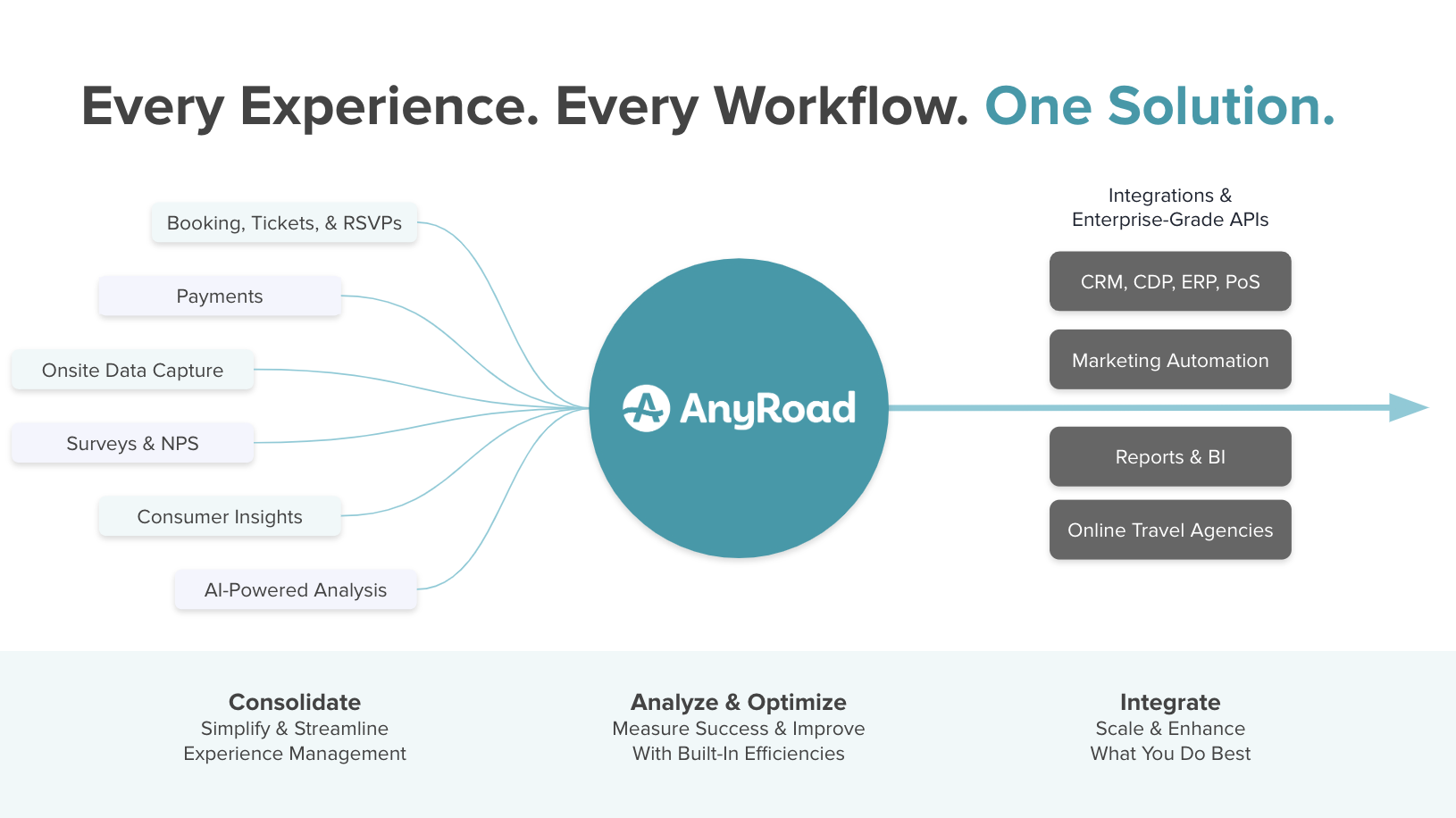2023 has seen incredible brand home innovations, from personalized whisky tours to ice cream tastings. As CPG and alcohol brands seek to expand their consumer touchpoints, brand homes remain one of the most powerful strategies to bring consumers closer.
When we developed our State of Experiential Marketing 2024 report, we pulled out brand home-specific statistics from operators and leaders to bring visibility into what’s top-of-mind. Combined with 2 million data points from brand home visitors, we discovered valuable insights to help you perfect your strategy for 2024.
The top 4 takeaways from the Brand Home Trends: 2023 Review are:
- The main goal of brand home experiences is to grow brand loyalty and awareness.
- Brand home experiences see an average NPS increase of 50 points post-event.
- The biggest challenge is the need for more team resources.
- Brand homes are most popular with globe trotters. The most common visitor distance is 400+ miles away.
The Main Goal of Brand Home Experiences
When we surveyed brand home operators and managers, 79% agreed that the main goal for offering experiences at their brand homes was to grow brand loyalty and awareness. And we absolutely agree; brand homes are a way to bring your values to life and create an emotional bond with consumers.
What makes this stat interesting, however, is how those surveyed then said they measure success by:
- Ticket Sales - 42%
- Net Promoter Scores - 15%
- Marketing Opt-Ins - 8%
See the mismatch? It makes sense that operators think about ticket sales as a success metric; after all, brand homes are ticketed events. However, our data shows a better way to prove brand loyalty growth: NPS to measure brand sentiment and a brand conversion rate.

Brand Perception in Brand Homes
Speaking of conversion rates, we dug into the data collected by our platform to benchmark how brand home experiences affect perception and loyalty in a more living way.
Brand Conversion Rate: This is the number of consumers who previously identified as detractors or passives, according to NPS results, but leave your experience as promoters. Detractors think poorly of your brand, and passives are more apathetic.
The detractors and passives are divided by those who became promoters during your brand home experience, then multiplied by 100.
The average brand conversion rate for brand homes is a whopping 87%. That’s right; 87% of detractors and passives are converted to promoters after a brand home experience. In fact, the average NPS increase is by 50 points! That’s a powerful loyalty statistic. But who is it changing?
By Gender

Our data shows that men start at a higher net promoter score on average, but women have a more significant change in perception after attending a brand home event. We find that men have higher perceptions of the brand before their brand home experience, and women start lower. But the brand home experience affects all genders; the leap to promoter status is often a similar score in the 80s.
Brand Home Experience Challenges
There’s no shortage of challenges when operating a brand home. However, we asked the industry what they faced the most.
Here’s the breakdown:
- Not Enough Team Resources - 57%
- Lack of Alignment for Global Teams - 24%
- Unable to Prove ROI - 14%
- Lack of Budget - 5%
Brand home teams overwhelmingly need more resources, like improved bandwidth and headcount, but that’s on par with the rest of the experiential industry. Our State of Experiential Marketing 2024 report found that 59% of the industry faces the same challenge. And when it’s across all teams and types of experiences, that’s not a one-off problem; it’s an epidemic.
The secret to unlocking more team resources is a more nuanced approach to demonstrating ROI, such as using brand conversion rate in your measurement. When ticket sales are the major success indicator, brand homes can show their ROI more concretely. It’s in the revenue numbers.
But ticket sales are a short-term goal. For a long-term strategic mindset, thinking of how brand home experiences can affect the brand as a whole helps overall growth.
For example, understanding where your guests are visiting to make distribution decisions or tracking purchase intent, both before and after the experience, can expand the use of a brand home experience’s data and create more long-term ROI.
Traveling to Brand Homes
Brand homes can act as great tourism attractions, beacons for brands that bring travelers from all over to their doorstep. Here are two breakdowns of how far guests are willing to travel to brand homes and how gender makes an impact.
Guest Travel Distance
.png)
Most popular with: Locals who live near the brand home and tourists looking for things to do in the area.
Gender Distance Breakdown
.png)
That’s right — men are likelier to travel any length to visit a brand home, which makes sense since they start their perception higher than women.
The Takeaway
Brand homes in 2023 saw great brand conversion rates, showcasing their ability to win the hearts and minds of visitors worldwide. But with team resources needing to improve, operators and managers alike are feeling the strain.
Moving into 2024, we predict that brand home experiences will get on the same page as others in the industry about using their experiences to grow and deepen brand loyalty with consumers. And with teams now having access to dedicated analytics tools, more conversations are happening around what success means and looks like. We’ll see a huge uplevel of sophistication in how they measure and prove success.






%2012.57.51%E2%80%AFa.m..png)
